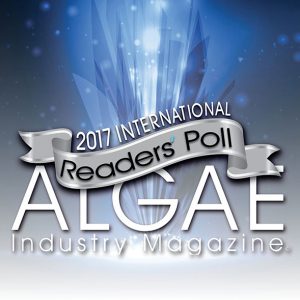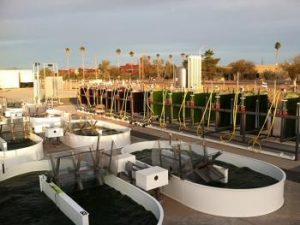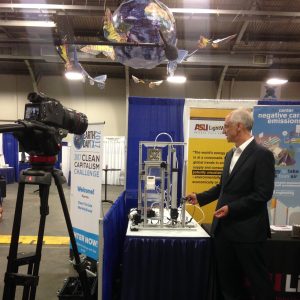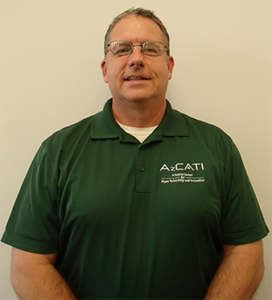May 13, 2017
 Algae Industry Magazine’s (A.I.M.) International Readers’ Poll is an assessment of where the algae industry is today, and what dominated 2016. It singles out those who are driving the industry’s progress, as well as those who are making the most valuable contributions through their dedication, skills, ideas and high achievement.
Algae Industry Magazine’s (A.I.M.) International Readers’ Poll is an assessment of where the algae industry is today, and what dominated 2016. It singles out those who are driving the industry’s progress, as well as those who are making the most valuable contributions through their dedication, skills, ideas and high achievement.
The 2017 International Readers’ Poll surveys the perspectives of A.I.M. readers, who have invaluable firsthand knowledge in recognizing the trends and technologies that will enable algae development and applications.
This year, Arizona State University won four Gold Awards: Algae Educational Institution and Algae Laboratory awarded to the Arizona Center for Algae Technology and Innovation (AzCATI), Scientist or Research awarded to Dr. Thomas Dempster, and Laboratory Equipment awarded to Dr. Bruce Rittmann and Dr. Klaus Lackner.
 AzCATI – located at ASU’s Polytechnic campus – serves as a resource hub for algae-based products; finds innovative commercial uses for algae; operates as a learning environment for next generation scientists; facilitates collaboration among higher education, industry and national entities; and is a national “testbed” for algae technology.
AzCATI – located at ASU’s Polytechnic campus – serves as a resource hub for algae-based products; finds innovative commercial uses for algae; operates as a learning environment for next generation scientists; facilitates collaboration among higher education, industry and national entities; and is a national “testbed” for algae technology.
AzCATI is Arizona’s platform to spur a new industry cluster in research, development and commercialization of products along the algal value chain. Multidisciplinary teams from biological, chemical and engineering disciplines across academic, governmental and industry boundaries have been formed to bring multidimensional thinking into algal research and problem-solving.
These high-level teams have allowed AzCATI to enable scientific discoveries, development of cutting-edge technologies, and generation of innovative solutions to key biological, engineering and economic problems. AzCATI research has been critical for transformation and translation of algae into cost-affordable, sustainable sources of feedstock for biofuels and bioproducts, as well as environmental improvement through carbon capture and wastewater bioremediation.
Dr. Thomas Dempster began his algae research career as an undergraduate at Arizona State University in 1988 working on the Aquatic Species Program. He completed his B.S in Biology, M.S. in Botany and Ph.D. in Plant Biology from Arizona State University while studying a variety of algae-related topics primarily related to algal biofuel production, drinking water quality and wastewater bioremediation.
He currently works as a research professor focusing on strain selection and development, biomass production, algal biofuels and high-value products, and air and wastewater bioremediation at AzCATI at ASU. At AzCATI, he has also served as an Associate Research Professor and laboratory manager since 2010.
Dr. Dempster also serves as the testbed site coordinator and Director for the U.S. Department of Energy-funded Algae Testbed Public-Private Partnership (ATP3).
As an ambassador for algae research, Dr. Dempster serves on a steering committee for the new South African National Phycology Culture Collection – co-chairing the Environmental Applications portion of the 2nd World Congress on Electroporation – and as International Editor for the Polish Botanical Journal. He has taught algae content to representatives from more than 150 institutions, companies and national labs in the last 4 years.
 What if rather than using fuels that add carbon dioxide, we could create fuels that recycle carbon dioxide from the atmosphere? Researchers at ASU – under the supervision of Klaus Lackner, director of ASU’s Center for Negative Carbon Emissions and a professor in ASU’s Ira A. Fulton Schools of Engineering – are exploring the idea of creating fuels that do just that: carbon-neutral liquid fuels. Think of them as fuels created out of thin air.
What if rather than using fuels that add carbon dioxide, we could create fuels that recycle carbon dioxide from the atmosphere? Researchers at ASU – under the supervision of Klaus Lackner, director of ASU’s Center for Negative Carbon Emissions and a professor in ASU’s Ira A. Fulton Schools of Engineering – are exploring the idea of creating fuels that do just that: carbon-neutral liquid fuels. Think of them as fuels created out of thin air.
ASU’s Air Capture Technology collects carbon dioxide from the atmosphere using a technique that literally scrubs it from the air and then captures it so it can be reused at an affordable cost — a carbon dioxide recycling program.
How exactly can fuel be pulled from thin air? First, the center’s researchers generate hydrogen by using a renewable, carbon-free electricity source (such as wind energy or solar power) to split water through a process called electrolysis. Second, this gaseous hydrogen is combined with the carbon dioxide captured from air.
What does this mixture produce? Methanol, an alcohol fuel similar to ethanol. Voila! Fuel from air.
Contact Samson Szeto for additional information.


